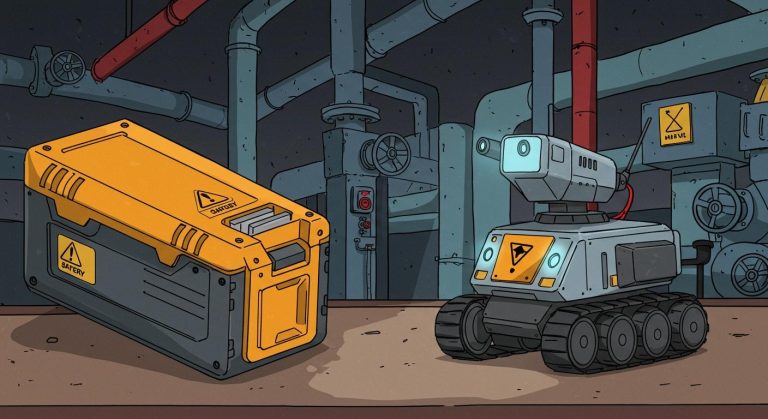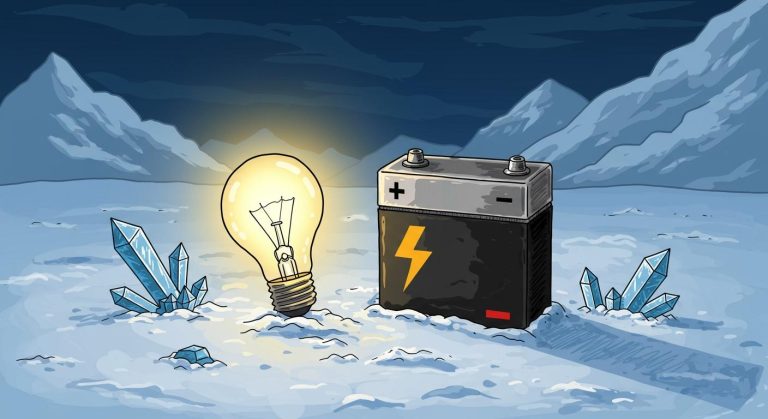
When you use a battery as a buffer in electric systems, you help stabilize power supply and demand. This power buffer absorbs energy during low demand and releases electric energy during peaks. In commercial settings, power buffer systems prevent blackouts, cut annual losses of $26 billion, and improve reliability across electric energy storage and electric infrastructure.
Key Takeaways
Batteries used as buffers store extra energy when demand is low and release it during peak times, helping keep power steady and reducing outages.
Buffer batteries stabilize voltage to protect sensitive equipment and improve power quality, which lowers costs and extends battery life.
Using buffer batteries with smart load management prevents system overloads, supports critical infrastructure, and saves money by optimizing energy use.
Part 1: Battery as a Buffer

1.1 Energy Storage and Release
When you use a battery as a buffer, you create a flexible power buffer that absorbs and releases energy to keep your electric systems stable. The core function of this power buffer is to store excess energy during periods of low demand and release it when your system needs more power. This process helps you manage power fluctuations, especially when you rely on renewable sources like solar or wind. An energy storage system can absorb surplus energy from solar panels during sunny hours and then supply that energy when clouds reduce output or demand spikes.
You see this principle in action with stationary battery banks in commercial buildings. These power buffer systems charge up during off-peak hours and discharge during high-traffic periods, ensuring continuous power for critical operations. In a hybrid vehicle, the battery as a buffer captures regenerative energy during braking and releases it to assist the full electric driveline during acceleration. This dynamic response not only improves efficiency but also extends the life of your electric vehicle’s main components.
Grid-scale energy storage absorbs excess electricity generated during periods of high renewable output and releases it during times of higher demand, thus managing power fluctuations.
Energy storage provides key grid services such as reserve power, frequency response, and flexible ramping, which are essential to maintaining grid stability amid variable renewable generation.
Energy arbitrage is a primary role of storage: charging when electricity prices are low and discharging when prices are high, smoothing out supply and price fluctuations.
Modeling studies show that storage participation in real-time and day-ahead markets reduces electricity price volatility and emissions, confirming storage’s role in balancing supply and demand.
Ancillary services like frequency regulation and responsive reserve service, supported by storage, directly address power fluctuations and contribute significantly to storage revenue.
A numerical analysis of buffer battery systems in hybrid renewable energy setups shows that advanced energy management strategies, such as convex optimization, allow batteries to cycle more frequently and efficiently. This approach increases the internal rate of return and improves the economic feasibility of your energy storage investments. By optimizing energy storage capacity and dispatch, you can maximize the benefits of your power buffer and support a full electric driveline in both stationary and mobile applications.
1.2 Voltage Stabilization
Voltage stabilization is another critical benefit when you use buffer batteries as a power buffer. Fluctuations in voltage can damage sensitive equipment and disrupt operations. Buffer batteries help maintain a steady voltage by absorbing excess energy during surges and releasing it during drops. This function is vital for electric vehicle charging stations, renewable energy installations, and industrial automation systems.
A detailed experimental study found that buffer batteries stabilize voltage during intermittent discharge cycles. The kinetic battery model explains how internal charge transfer processes allow the battery to recover and maintain voltage stability, even under variable loads. Siemens’ Siestorage lithium-ion battery system, for example, buffers short-term fluctuations in renewable energy output and stabilizes grid voltage during sudden changes in solar power. This system enables controlled grid restarts after blackouts, proving the effectiveness of buffer batteries in real-world electric setups.
Tip: Use buffer batteries with advanced cell balancing and high-resolution monitoring to achieve precise voltage regulation and extend battery life.
Metric / Benchmark | Description | Impact on Voltage Regulation / Battery Buffering |
|---|---|---|
Industry-leading 1.5 mV LTME in ADBMS6815, nearly 2× better than previous benchmarks | Improves SOC estimation accuracy, enabling better voltage regulation and extended EV range | |
Load and Line Regulation (LT8316 flyback converter) | Tight regulation achieved without optocoupler, with 91% peak efficiency | Enhances voltage stability and simplifies isolated converter design |
Coreless Current Sensing with AMR Sensors | High bandwidth, accurate current measurement without magnetic core, using ring architecture of AMR sensors | Supports better inverter control and load regulation, indirectly improving voltage regulation through battery buffering |
ADC Resolution and Oversampling (ADBMS6815) | Two 16-bit sigma-delta ADCs with programmable oversampling ratios (26 Hz to 27 kHz) | Enables precise cell voltage measurement, contributing to accurate SOC and voltage regulation |
Cell Balancing Capability (ADBMS6815) | 300 mA cell balancing integrated, eliminating external discharge switches | Improves battery health and voltage uniformity across cells |
You gain practical benefits from voltage stabilization, such as power quality correction, prevention of voltage sags, and improved system predictability. Energy management with buffer batteries can reduce electricity costs by 20–30% through peak shaving and extend battery runtime beyond traditional UPS limits. These improvements support the full electric driveline in electric vehicles and enhance the reliability of your electric infrastructure.
1.3 Load Management
Load management is essential for preventing system overloads and ensuring continuous power delivery. When you use a battery as a buffer, you smooth out sudden changes in demand and protect your electric systems from short interruptions. Buffer batteries supply power to the load during brief outages or when the main supply cannot meet peak demand. This power buffer effect is crucial for critical infrastructure, such as cellular repeater towers, where even a 10 to 20 ms interruption can cause system failures.
The TDK-Lambda blog highlights how buffer batteries extend the hold-up time of power supplies, maintaining voltage and power during brief AC input interruptions. This buffering effect ensures stable operation and safe shutdowns, even when the main supply falters. In electric vehicle charging networks, dynamic load management (DLM) paired with buffer batteries intelligently distributes available capacity among multiple chargers. DLM monitors power usage in real time, adjusts charging levels, and prevents overloads by storing excess energy and releasing it during peak hours.
Dynamic Load Management (DLM) distributes electrical capacity among multiple electric vehicle chargers, preventing overloads.
DLM prevents sudden spikes in electricity demand by real-time power allocation, ensuring total consumption stays within safe limits.
It prioritizes charging needs, allowing critical vehicles to charge first while delaying lower-priority ones, thus managing load effectively.
DLM avoids costly electrical infrastructure upgrades by maximizing existing capacity through intelligent power distribution.
Integration with Building Energy Management Systems (BEMS) ensures EV charging does not interfere with other critical electrical loads.
Pairing DLM with buffer batteries allows storing excess power and using it during peak hours, further reducing grid dependency and preventing overloads.
You benefit from enhanced grid stability, lower energy costs, and improved sustainability when you combine buffer batteries with advanced energy management systems. These solutions support the full electric driveline in electric vehicles, enable regenerative braking, and optimize energy storage capacity for both stationary and mobile applications.
Note: To maximize the lifespan and performance of your buffer batteries, always monitor net charge, avoid deep discharges, and select the right battery type for your cycling needs. Deep-cycle batteries are best for applications that require frequent cycling, such as renewable energy storage or hybrid vehicle systems.
Part 2: Power Buffer Applications

1.1 Industrial and Commercial Use Cases
You see power buffer systems transforming how you manage energy in industrial and commercial settings. In electric vehicle charging stations, a power buffer unit stores energy during off-peak hours and releases it when demand spikes. This approach reduces grid stress and ensures fast, reliable charging for every vehicle. Many companies use buffer batteries to smooth renewable energy output, making solar and wind power more dependable for factories and offices. For example, projects in the USA, Germany, and Japan use second-life electric vehicle batteries as power buffers for renewable energy storage, peak load shaving, and backup power. These systems range from 60 kWh for small businesses to over 10 MWh for large industrial sites.
You also benefit from power buffer solutions in critical infrastructure. Hospitals, data centers, and cellular towers rely on buffer batteries to maintain electric power during outages or sudden surges. By integrating energy storage with your electric systems, you protect sensitive equipment and avoid costly downtime.
Parameter | Batteries | Capacitors | Supercapacitors (Ultracapacitors) |
|---|---|---|---|
Cycle Life | ~500 hours | 1,000 – 10,000 hours | Up to 1,000,000 cycles |
Charging Time | 10 – 60 minutes | Very fast (seconds) | 1 – 10 seconds |
Operating Temperature | -20 to 60 °C | Up to 105 °C | -40 to 100 °C |
Energy Density | High | Low | Moderate to high |
Power Density | Low | High | Very high |
Advantages | Stable voltage, low cost | Fast charge/discharge | Very long cycle life, fast charging, high power density |
Disadvantages | Limited cycle life, slower charging | Low energy storage capacity, shorter life | Higher cost, lower energy storage than batteries |
Typical Applications | Energy storage buffers | Short-duration power supply | Energy harvesting, wireless sensor networks, renewable energy systems |
Comparative studies show that while supercapacitors offer rapid charging and long cycle life, batteries provide higher energy density, making them ideal for power buffer applications that require sustained energy delivery. You choose the right technology based on your energy needs and operational priorities.
1.2 Efficiency and Maintenance
You gain significant efficiency improvements and maintenance savings by using power buffer systems. For example, the PowerHive system reduces energy costs by cutting peak demand charges and lowering overall power consumption. You also save on labor because automated power buffer management reduces the need for manual battery maintenance. Real estate optimization and increased battery utilization further boost your return on investment.
When you follow best practices—such as regular testing, monitoring net charge, and avoiding deep discharges—you extend the lifespan of your buffer batteries. Studies show that electric vehicle batteries managed with these strategies age more slowly and last longer than those in traditional vehicles. Advanced control methods, like extremum seeking control, help you optimize energy storage efficiency and battery life by adjusting discharge rates in real time.
Tip: Schedule routine inspections and use smart monitoring tools to maximize the performance and reliability of your power buffer units. This approach ensures your energy storage system delivers consistent electric power and supports your electric vehicle fleet or facility operations.
You gain improved reliability, efficiency, and system protection when you use a battery as a buffer in your electrical systems. Experts recommend battery integration for renewable energy and grid stability.
Lithium-ion battery solutions support high power needs.
System assessments show battery buffers help manage demand and prevent outages.
Consider consulting specialists to optimize your battery strategy.
FAQ
1. What is the main advantage of using a battery as a buffer?
You gain stable power delivery. Buffer batteries help you prevent outages and protect sensitive equipment from voltage fluctuations.
2. How do you choose the right battery type for buffer applications?
You select deep-cycle batteries for frequent cycling. For backup-only use, you choose stationary or starter batteries. Always match battery type to your system’s needs.
3. Can buffer batteries reduce your energy costs?
Yes, buffer batteries let you store energy during off-peak hours.
You release stored energy during peak times.
This strategy helps you lower your electricity bills.






